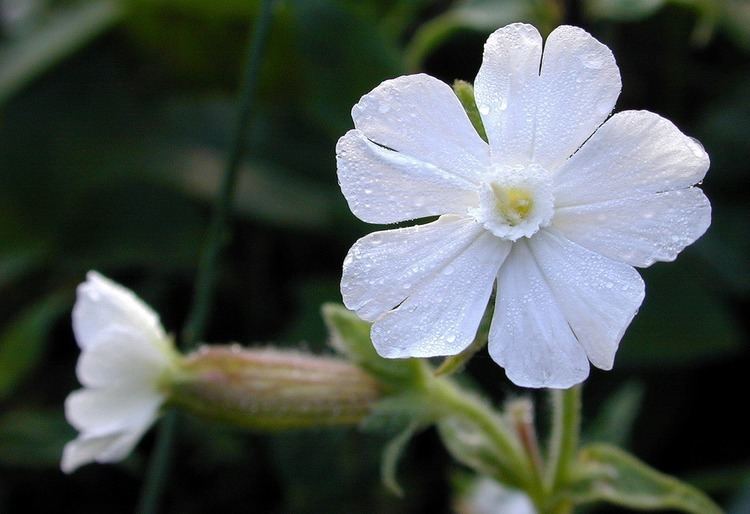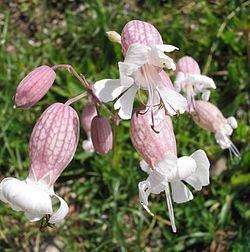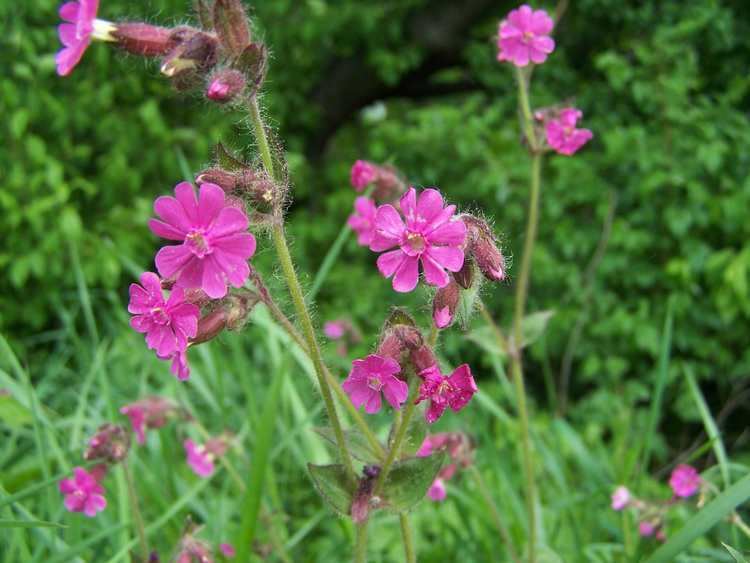Scientific name Silene Rank Genus | ||
 | ||
Lower classifications Silene vulgaris, Silene latifolia, Silene dioica, Silene acaulis, Silene gallica Similar Silene acaulis, Silene dioica, Silene gallica | ||
Plant portrait fire pink silene virginica
Silene is a genus of flowering plants in the family Caryophyllaceae. Containing approximately 700 species, it is the largest genus in the family. Common names include campion (which is shared with the related genus Lychnis) and catchfly. Many Silene species are widely distributed, particularly in the northern hemisphere.
Contents
- Plant portrait fire pink silene virginica
- Silene viscaria flowering plant
- Etymology
- Uses
- Scientific history
- Selected species
- References

Silene viscaria flowering plant
Etymology
Silene is the feminine form of Silenus, a Greek woodland deity.
Uses

Silene undulata (syn. S. capensis) is known as iindlela zimhlophe ("white paths") by the Xhosa of South Africa. A Xhosa diviner identifies and collects the plant from the wild. The roots are ground, mixed with water, and beaten to a froth, which is consumed by novice diviners during the full moon to influence their dreams. They also take it to prepare for various rituals. The root has such a strong, musky essence that the diviners who consume it exude the scent in their sweat.
Scientific history

Silene was originally described by Linnaeus, and members of this genus have been the subject of research by preeminent plant ecologists, evolutionary biologists, and geneticists, including Charles Darwin, Gregor Mendel, Carl Correns, Herbert G. Baker, and Janis Antonovics. Many Silene species continue to be widely used study systems, particularly in the fields of ecology and evolutionary biology. The genus has been used as a model for understanding the genetics of sex determination for over a century. Silene species commonly contain a mixture of hermaphroditic and female (or male-sterile) individuals (gynodioecy), and early studies by Correns showed that male sterility could be maternally inherited, an example of what is now known as cytoplasmic male sterility. Two independent groups of species in Silene have evolved separate male and female sexes (dioecy) with chromosomal sex determination that is analogous to the system found in humans and other mammals. Silene flowers are frequently visited by flies, such as Rhingia campestris. Silene species have also been used to study speciation, host-pathogen interactions, biological species invasions, adaptation to heavy-metal-contaminated soils, metapopulation genetics, and organelle genome evolution. Notably, some members of the genus Silene hold the distinction of harboring the largest mitochondrial genomes ever identified.
Selected species

If the related genera Lychnis, Melandrium, and Viscaria are included in Silene, it contains about 700 species. Divisions of the genus into subgenera or sections before 2003 do not seem to be well-supported by molecular evidence.
Species include:

